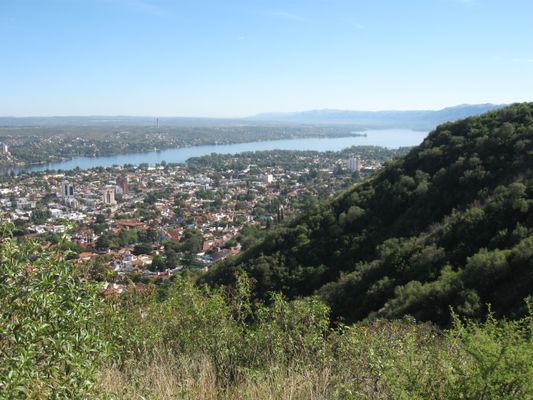This Argentinian town in Córdoba province has Che Guevara's childhood home, now a museum, and a 17th-century Jesuit estancia with baroque architecture.
Alta Gracia, a small city in Argentina's Córdoba province, grew from a 17th-century Jesuit ranch into a cultural destination. Walk through rooms where Che Guevara spent his childhood, see the piano where Spanish composer Manuel de Falla created his last works, and step into the colonial church Nuestra Señora de la Merced with its detailed wooden altar and baroque architecture.
Exploring the Che Guevara Connection
The Villa Beatriz museum, Che Guevara's childhood home, shows the early life of the revolutionary figure who lived here from 1932 to 1944. The Guevara family moved to Alta Gracia when Ernesto was four years old, seeking relief for his severe asthma in the dry mountain climate. Walk through rooms filled with family photographs, personal belongings, and detailed information about his formative years. The museum provides English language guidebooks. Visit Tuesday through Sunday, and come in the morning to avoid afternoon crowds.
Museums and Cultural Sites
At the Manuel de Falla Museum, you'll find the Spanish composer's piano, manuscripts, and personal items from his final years (1942-1946) in Alta Gracia. The Gabriel Dubois Art Museum occupies the French artist's former home, displaying his sculptures and paintings from South America. Visit the Santiago de Liniers Museum (La Casa del Virrey) Tuesday through Sunday to see exhibits about the former Viceroy of the River Plate who lived in this colonial building.
The Jesuit Complex
The 17th-century Jesuit estancia sits in the center of Alta Gracia. Inside the Parroquia Nuestra Señora de la Merced church, you'll find original colonial architecture, carved wooden altars, and religious art from the 1600s. Jose Manuel Solares bought the estancia in 1820, after several owners had managed it following the Jesuits' departure. In 2000, the complex became part of the Jesuit Block and Estancias of Córdoba World Heritage Site.
Central Alta Gracia
The public clock tower in the city center now serves as an information office. Next to it, El Tajamar, a man-made lake, draws locals who gather here in the evenings. Walk through the older section of town to see colonial houses dating from the 18th and 19th centuries. The Sierras Hotel, which hosted politicians and artists throughout the 1900s, remains a prominent building in the city center.
Getting There and Around
Alta Gracia lies 30 kilometers southwest of Córdoba city. Buses run every 30 minutes between the two cities, with the journey taking about 45 minutes. Find the tourist office near the bus terminal for maps and directions - the terminal's location has changed from what older guidebooks show. You can walk to most sites in the city center within 15-20 minutes.





















